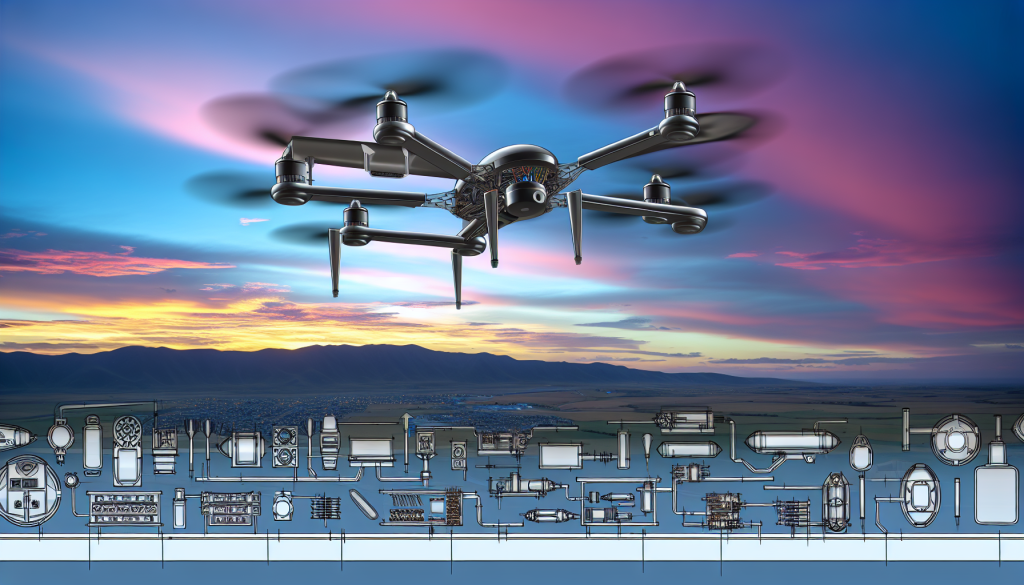ROCK ISLAND ARSENAL, Ill. — The U.S. Army is currently undergoing a transformative shift in its organic industrial capabilities, strategically pivoting to meet the demands of modern warfare through the development of a network of drone manufacturing facilities. This initiative draws significant inspiration from the ongoing conflict in Ukraine, where the effective deployment of inexpensive drones and loitering munitions has significantly reshaped combat dynamics.
Lt. Gen. Christopher Mohan, the acting commander of Materiel Command, stressed the Army’s long-standing expertise in manufacturing. However, he remarked on the distinct challenges posed by unmanned aerial systems (UAS), stating, “We know how to manufacture things. There’s not a problem with that, but UAS, they are different.” This acknowledgment underscores the Army’s pressing need to acquire specialized capabilities and equipment, notably for the production of brushless motors crucial for these systems.
In a bid to close the production gap with global adversaries, the newly launched SkyFoundry initiative aims to convert traditional depots and arsenals into state-of-the-art drone manufacturing hubs. The ambitious goal? Mass-produce small, expendable drones at an astonishing rate of 10,000 systems per month. Col. Eloy Martinez, the commander of Rock Island Arsenal, highlighted the bureaucratic red tape that complicates this rapid production, noting, “We have a lot of laws that we have to abide by … it’s the bureaucratic stuff that’s always downhill.” This insight reveals the hurdles that innovators face within military frameworks, trying to balance rapid technology advancements with regulatory compliance.
Brig. Gen. Beth Behn, commander of the Army Tank-Automotive and Armaments Command, echoed the urgency of the initiative, drawing from her firsthand experience in the drone warfare landscape in Ukraine. “We have got to adapt,” she declared, emphasizing the necessity for the Army to swiftly evolve in response to continuously shifting threats.
At Rock Island Arsenal, substantial investments are being funneled into advanced manufacturing technologies, with particular focus on 3D printing capabilities. This facility is already on the frontlines of innovation, producing drone bodies and frames through additive manufacturing techniques. The plans here include adopting new technologies that could ramp up production to a staggering 120,000 drone bodies annually. With cost estimates projected to fall below $100 per drone, this could facilitate a drive towards creating cost-effective, expendable systems tailored for combat environments.
Each Army depot has been assigned complementary roles within this burgeoning network. For instance, the Tobyhanna Army Depot in Pennsylvania will focus on wiring harnesses and electronic components, while Red River Army Depot in Texas will oversee final assembly and battery production. Mohan highlighted that SkyFoundry represents a conceptual framework rather than a singular location, advocating for a collaborative manufacturing approach. This strategy aims to empower each facility to specialize while leveraging digital platforms for shared information, creating a cohesive production ecosystem.
Exciting developments are also underway with the establishment of the Bluegrass Army Depot in Kentucky, designated as a UAS innovation center. This hub will be dedicated to advanced technological research and development, further solidifying the Army’s commitment to remain at the forefront of drone technology.
As the Army finalizes its production requirements, an initial goal to deliver drone bodies for 1,000 UAS by the end of the current fiscal year is being set. Plans for an expanded scale of production by 2026 are already in motion with an initial budget of approximately $197 million, which includes substantial investments in key technology areas. This forward-thinking approach not only aims to bolster domestic production but also to diminish reliance on foreign sources for drone components; currently, a staggering 90% of UAS parts are sourced from China and Taiwan.
By shifting focus to domestic sourcing, the Army is striving to create a more resilient supply chain that enhances national security. Yet, the practical challenges of integrating these sophisticated systems into training programs and ensuring proper logistical setups are significant. Notably, the first batch of 50 drone systems is earmarked for I Corps at Joint Base Lewis McChord, marking the commencement of a broader deployment strategy designed to elevate the Army’s operational readiness.
The expanding capacity for UAS production signals a pivotal evolution not only in military logistics but also in overarching operational strategies. This proactive adjustment positions the Army to effectively respond to contemporary threats in today’s rapidly changing battlefield environment.

